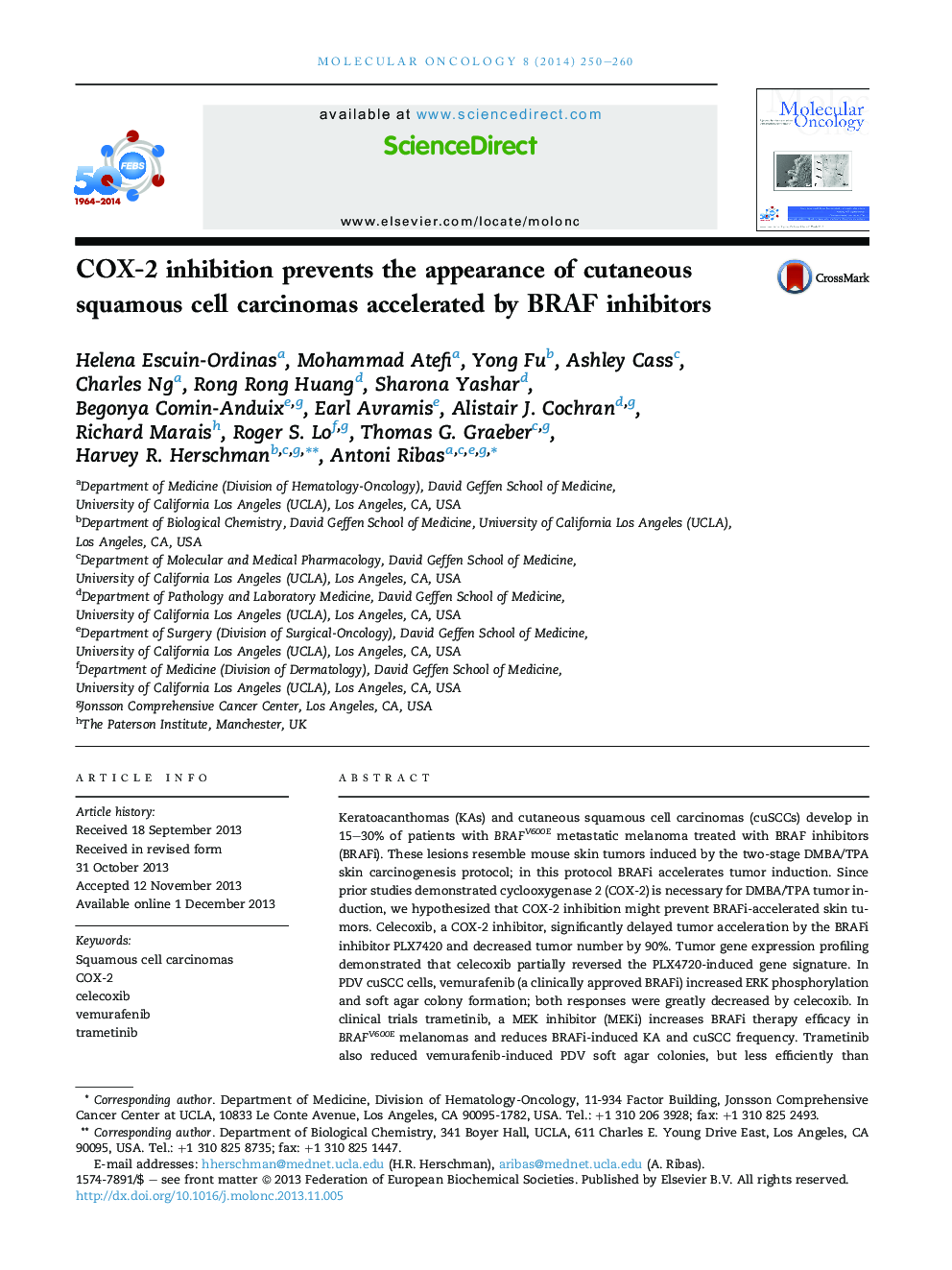| Article ID | Journal | Published Year | Pages | File Type |
|---|---|---|---|---|
| 10914745 | Molecular Oncology | 2014 | 11 Pages |
Abstract
Keratoacanthomas (KAs) and cutaneous squamous cell carcinomas (cuSCCs) develop in 15-30% of patients with BRAFV600E metastatic melanoma treated with BRAF inhibitors (BRAFi). These lesions resemble mouse skin tumors induced by the two-stage DMBA/TPA skin carcinogenesis protocol; in this protocol BRAFi accelerates tumor induction. Since prior studies demonstrated cyclooxygenase 2 (COX-2) is necessary for DMBA/TPA tumor induction, we hypothesized that COX-2 inhibition might prevent BRAFi-accelerated skin tumors. Celecoxib, a COX-2 inhibitor, significantly delayed tumor acceleration by the BRAFi inhibitor PLX7420 and decreased tumor number by 90%. Tumor gene expression profiling demonstrated that celecoxib partially reversed the PLX4720-induced gene signature. In PDV cuSCC cells, vemurafenib (a clinically approved BRAFi) increased ERK phosphorylation and soft agar colony formation; both responses were greatly decreased by celecoxib. In clinical trials trametinib, a MEK inhibitor (MEKi) increases BRAFi therapy efficacy in BRAFV600E melanomas and reduces BRAFi-induced KA and cuSCC frequency. Trametinib also reduced vemurafenib-induced PDV soft agar colonies, but less efficiently than celecoxib. The trametinb/celecoxib combination was more effective than either inhibitor alone. In conclusion, celecoxib suppressed both BRAFi-accelerated skin tumors and soft-agar colonies, warranting its testing as a chemopreventive agent for non-melanoma skin lesions in patients treated with BRAFi alone or in combination with MEKi.
Related Topics
Life Sciences
Biochemistry, Genetics and Molecular Biology
Cancer Research
Authors
Helena Escuin-Ordinas, Mohammad Atefi, Yong Fu, Ashley Cass, Charles Ng, Rong Rong Huang, Sharona Yashar, Begonya Comin-Anduix, Earl Avramis, Alistair J. Cochran, Richard Marais, Roger S. Lo, Thomas G. Graeber, Harvey R. Herschman, Antoni Ribas,
